L and N in electrics - color coding of wires
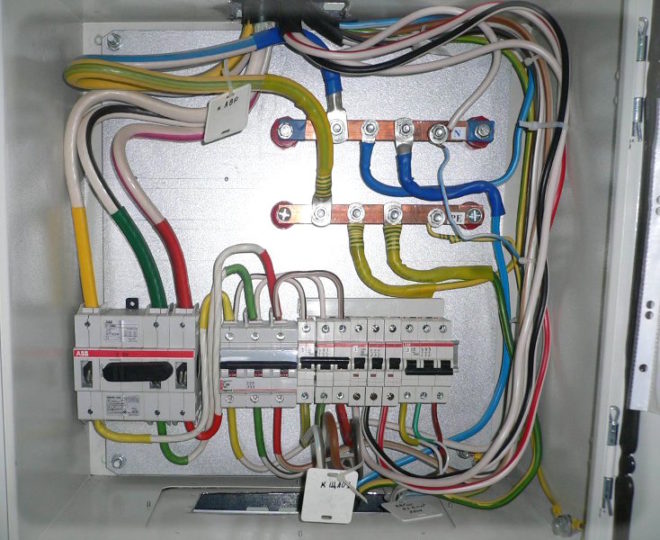
The overwhelming majority of cables have different colors of core insulation. This is done in accordance with GOST R 50462-2009, which sets the standard for marking l n in electrics (phase and neutral wires in electrical installations). Compliance with this rule guarantees quick and safe work of the master at a large industrial facility, and also allows you to avoid electrical injuries during self-repair.
Content
Variety of colors for the insulation of electrical cables
The color coding of wires is diverse and very different for grounding, phase and neutral conductors. To avoid confusion, the requirements of the PUE regulate what color the ground wire should be used in the power supply panel, which colors must be used for zero and phase.
If the installation work was carried out by a highly qualified electrician who knows modern standards for working with electrical wires, you will not have to resort to using an indicator screwdriver or a multimeter. The purpose of each cable core is deciphered by knowing its color designation.
Ground conductor color
From 01.01.2011 the color of the grounding (or neutral) conductor can only be yellow-green. This color coding of wires is also observed when drawing up diagrams on which such wires are signed with the Latin letters PE. The colors of one of the cores are not always intended for grounding on cables - usually it is done if the cable has three, five or more cores.
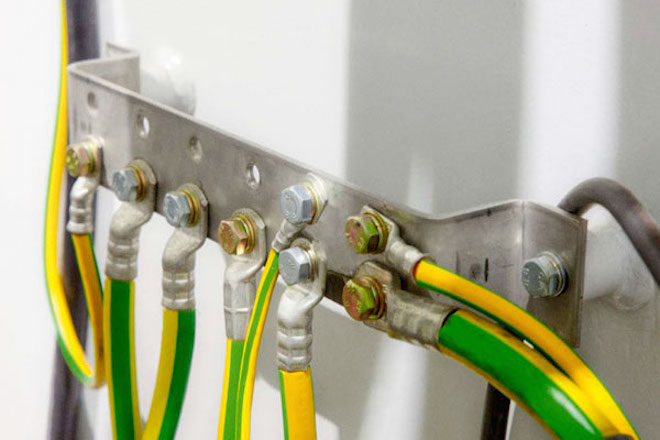
Special attention should be paid to PEN-wires with combined "ground" and "zero". This type of connection is still common in older buildings, where electrification was carried out according to outdated regulations and has not yet been updated. If the cable was laid according to the rules, then the blue color of the insulation was used, and yellow-green cambric was put on the ends and joints. Although, you can also find the color of the ground wire (zeroing) exactly the opposite - yellow-green with blue tips.
Protective grounding is mandatory when laying lines in residential and industrial premises and is regulated by the PUE and GOST 18714-81 standards. The neutral ground wire should have as little resistance as possible, the same applies to the ground loop. If all installation work is done correctly, then grounding will be a reliable protector of human life and health in the event of power line malfunctions. As a result, the correct marking of cables for grounding is crucial, and grounding should not be used at all. In all new houses, wiring is done according to the new rules, and the old ones are queued to replace it.
Colors for neutral wire
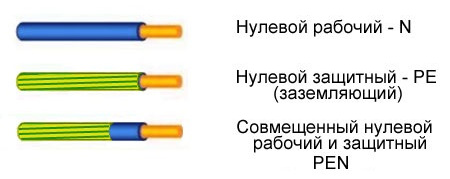
For "zero" (or zero working contact), only certain wire colors are used, also strictly defined by electrical standards. It can be blue, light blue or blue with a white stripe, and regardless of the number of cores in the cable: a three-core wire in this regard will not differ in any way from a five-core wire or with even more conductors. In electrical circuits "zero" corresponds to the Latin letter N - it is involved in closing the power supply circuit, and in the circuits it can be read as "minus" (phase, respectively, is "plus").
Colors for phase conductors
These electric wires require extra careful and “respectful” handling, as they are current-carrying, and careless touching can cause severe electric shock. The color coding of the wires for connecting the phase is quite diverse - only colors adjacent to blue, yellow and green cannot be used. To some extent, it is much more convenient to remember what the color of the phase wire may be - NOT blue or blue, NOT yellow or green.
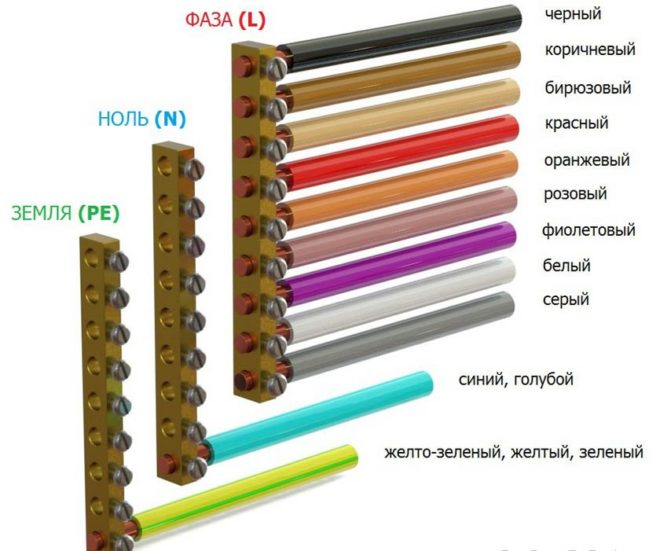
On electrical circuits, the phase is denoted by the Latin letter L. The same markings are used on the wires, if the color marking is not applied to them. If the cable is designed to connect three phases, then the phase conductors are marked with the letter L with a number. For example, to draw up a diagram for a three-phase 380 V network, L1, L2, L3 were used. Even in electrics, an alternative designation is adopted: A, B, C.
Before starting work, you need to decide how the combination of wires will look like in color and strictly adhere to the selected color.
If this issue was thought out at the stage of preparatory work and taken into account when drawing up wiring diagrams, you should purchase the required number of cables with conductors of the required colors. If, nevertheless, the required wire runs out, then you can mark the cores manually:
- ordinary cambric;
- shrink cambric;
- electrical tape.
About the standards for color coding of wires in Europe and Russia, see also in this video:
Manual color marking
It is used in cases when during installation it is necessary to use wires with cores of the same color. It also often happens when working in old buildings, in which the installation of electrical wiring was carried out long before the appearance of standards.
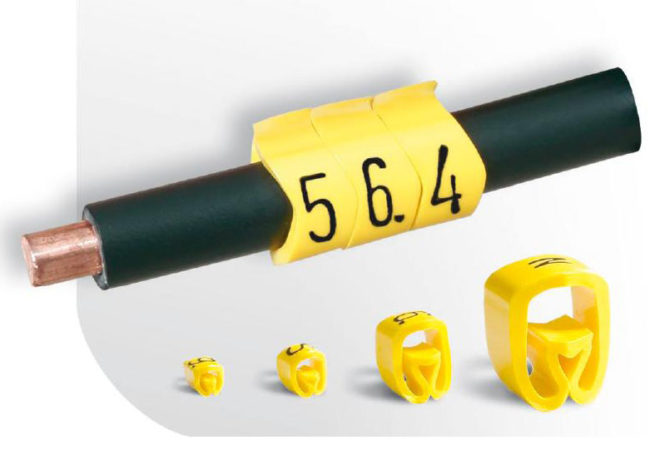
Experienced electricians, so that there is no confusion during the further maintenance of the electrical circuit, used kits that allow you to mark the phase wires. This is also allowed by modern rules, because some cables are made without color-letter designations. The place of use of manual marking is regulated by the norms of PUE, GOST and generally accepted recommendations. It is attached to the ends of the conductor where it connects to the bus.
Marking two-core wires
If the cable is already connected to the network, then a special indicator screwdriver is used to search for phase wires in an electrician - there is an LED in its case that glows when the sting of the device touches the phase.
Next, you will need a set of special shrink tubing or insulation tape to mark the phase and zero.

The standards do not oblige to make such markings on electrical conductors along their entire length. It is allowed to mark it only at the joints and connections of the necessary contacts. Therefore, if the need arises to apply marks on electric cables without designations, you need to purchase materials in advance to manually mark them.
The number of colors used depends on the scheme used, but the main recommendation is still there - it is advisable to use colors that exclude the possibility of confusion. Those. do not use blue, yellow or green marks for phase conductors. In a single-phase network, for example, the phase is usually indicated in red.
Marking of three-core wires

If you need to determine the phase, zero and ground in three-core wires, then you can try to do this with a multimeter. The device is set to measure alternating voltage, and then gently touch the phase with the probes (you can also find it with an indicator screwdriver) and consecutively the two remaining wires.Next, you should remember the indicators and compare them with each other - the "phase-zero" combination usually shows a higher voltage than the "phase-ground".
When phase, zero and ground are determined, then marking can be applied. According to the rules, a colored yellow-green wire is used for grounding, or rather a conductor with such a color, therefore it is marked with electrical tape of suitable colors. Zero is marked, respectively, with blue electrical tape, and any other phase.
As a result
Correct wire marking is a prerequisite for high-quality installation of electrical wiring when carrying out work of any complexity. It greatly facilitates both the installation itself and the subsequent maintenance of the electrical network. In order for electricians to “speak the same language”, mandatory standards for color-letter marking have been created, which are similar to each other even in different countries. According to them, L is the designation of the phase, and N is the zero.




